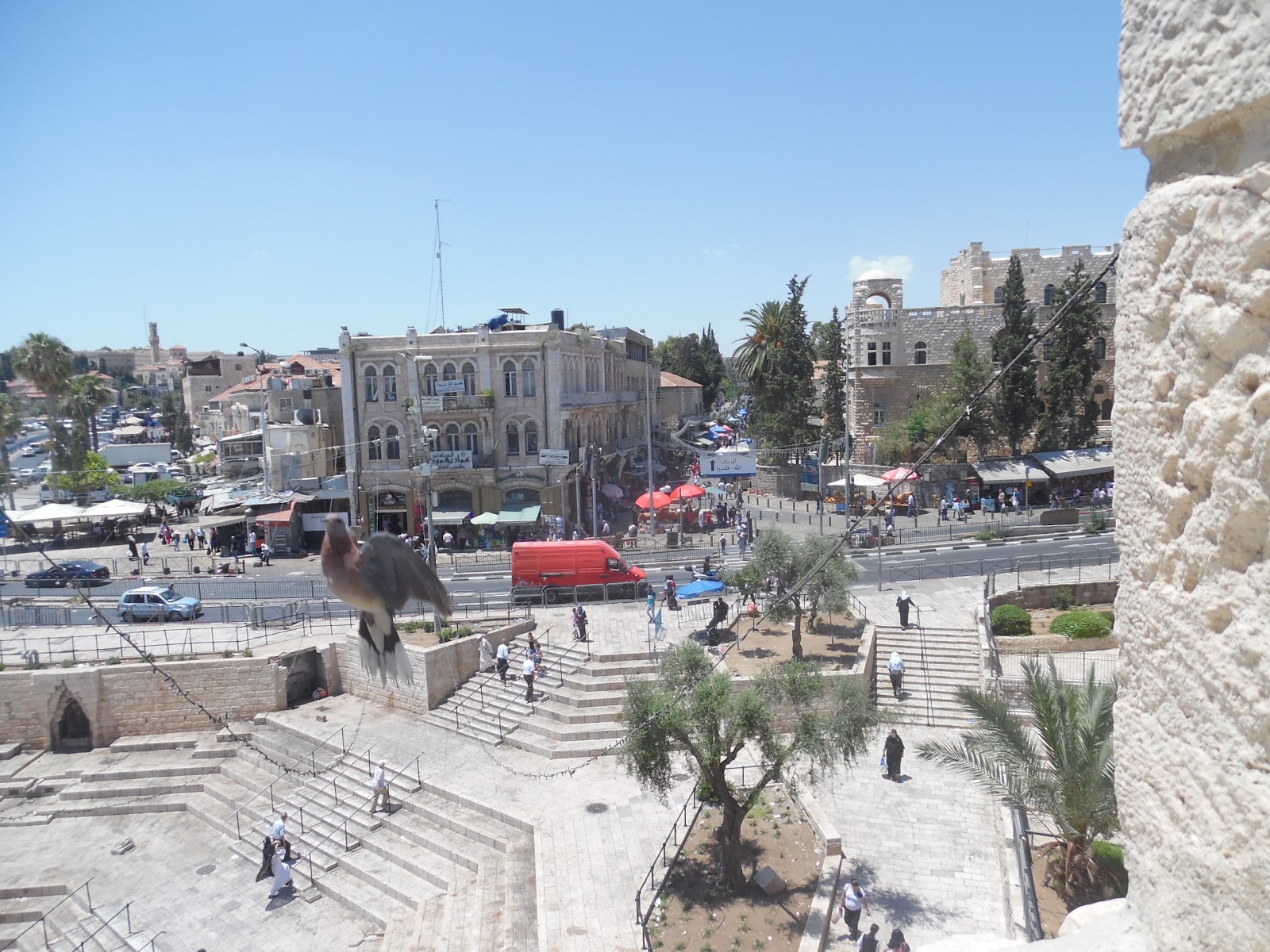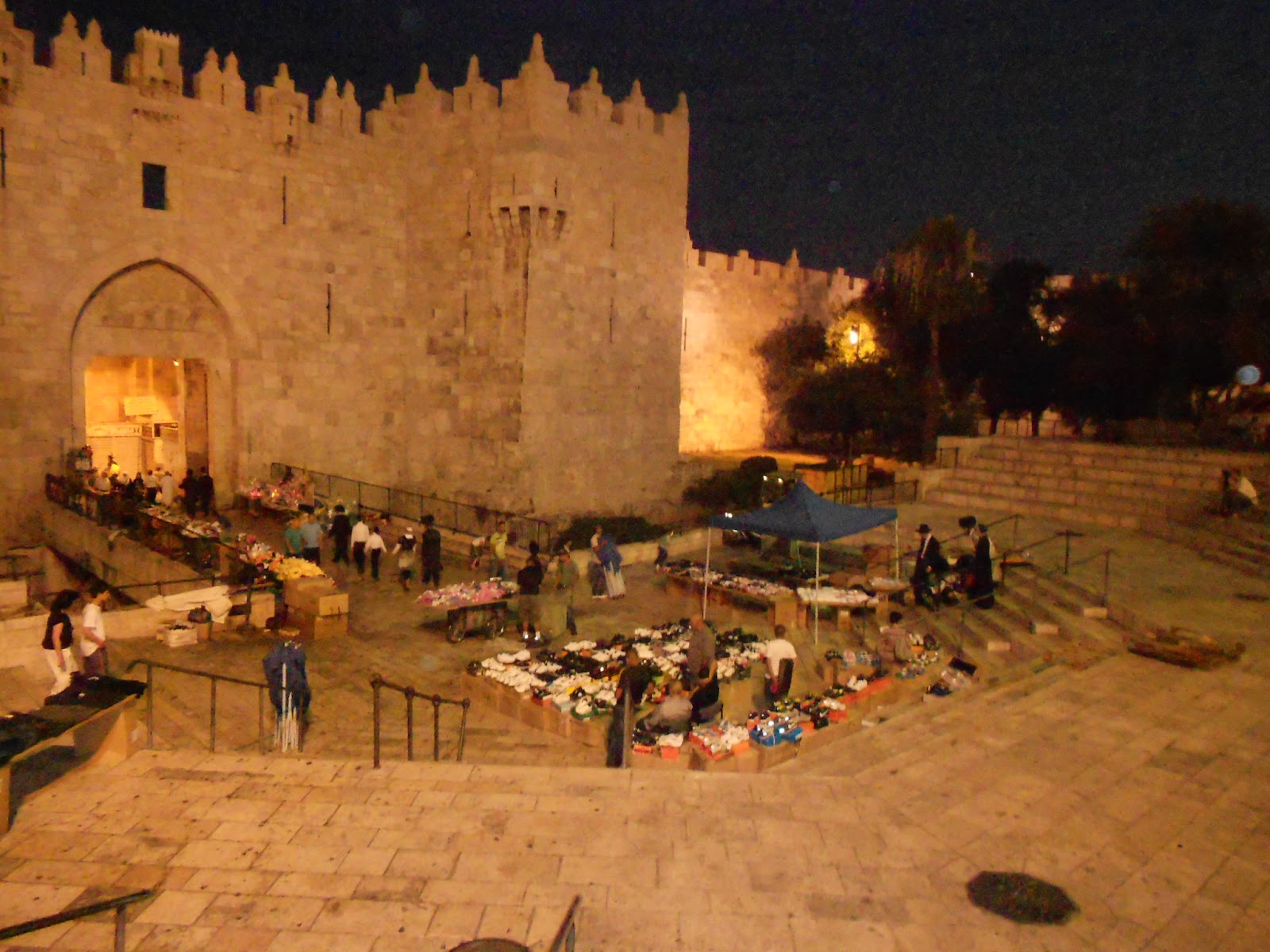It is amazing what sights escape us when we don’t know what is right in front of our eyes. At the Damascus Gate there is a gate below the gate. I have walked through his gate many times when visiting Jerusalem, but until i studied for new book
Israel: Stories for Your Journey, I totally missed the interesting Roman period entry which was literally right in front of me as I entered Jerusalem through this northernmost portal.
 |
A look north from the Ramparts Walk above the Damascus Gate.
Do you see what is right in front of your eyes? |
The Damascus gate is the grand northern entrance to the Old City of Jerusalem. It is on the main road leading out of Jerusalem northward, in the direction of Nablus (Shechem), Galilee and Damascus. It is the main entry into the Muslim Quarter, with its markets both inside the gate and a bazaar on the entry plaza on Thursday night. This major gate was the northern entry to the cardo, the main street of Jerusalem from the Roman period to our present time, which is the starting point of telling about the gate below the gate.
 |
A look at the Damascus Gate, The Roman entry
can be seen below the walkway to the left. |
After Jerusalem was subdued by both general Titus and by Hadrian, the emperor decided to rebuild and rename the city in order to demean the Jewish population. The new city was called Aelia Capitolina. Aelia was the emperor’s family name and celebrates the greatness of Hadrian. Capitolina praises a triad of Roman gods: Jupiter, Juno and Minerva. The city was built in the shape of a square with the main roads entering near today's Damascus Gate, Jaffa Gate, Zion Gate and the Stephen Gates. The second century Roman style entry consisted of a grand victory arch set between two smaller arches, a victory symbol which sometimes stood in an area which was in front of the city gates. Beyond the entrance stood a pillar with the bust of the Roman Emperor.
 |
| The Thursday Night Bazaar at the Damascus Gate |
As a person enters the Damascus gate today, the small Roman arches can be seen to the south and below the current gate reconstructed by Suleiman the Magnificent in the sixteenth century. The name Aelia Capitolina is emblazoned in Latin above the entrance and the original Roman pavers lead to a plaza with the remains of Hadrian’s pillar. From there a twenty-six foot wide cardo flanked by rows of columns and five foot wide raised sidewalks used to lead into the city.
 |
| Our travel brochure available at www.KosherCopy.com |
If you would like to see the Damascus Gate, and many other sights in Jerusalem and Israel, take a look at my
May adventure in the Holy Land (
link). If you can’t make it on the trip, please order my book,
Israel: Stories for Your Journey and take a look at my blog during the month of May.



No comments:
Post a Comment